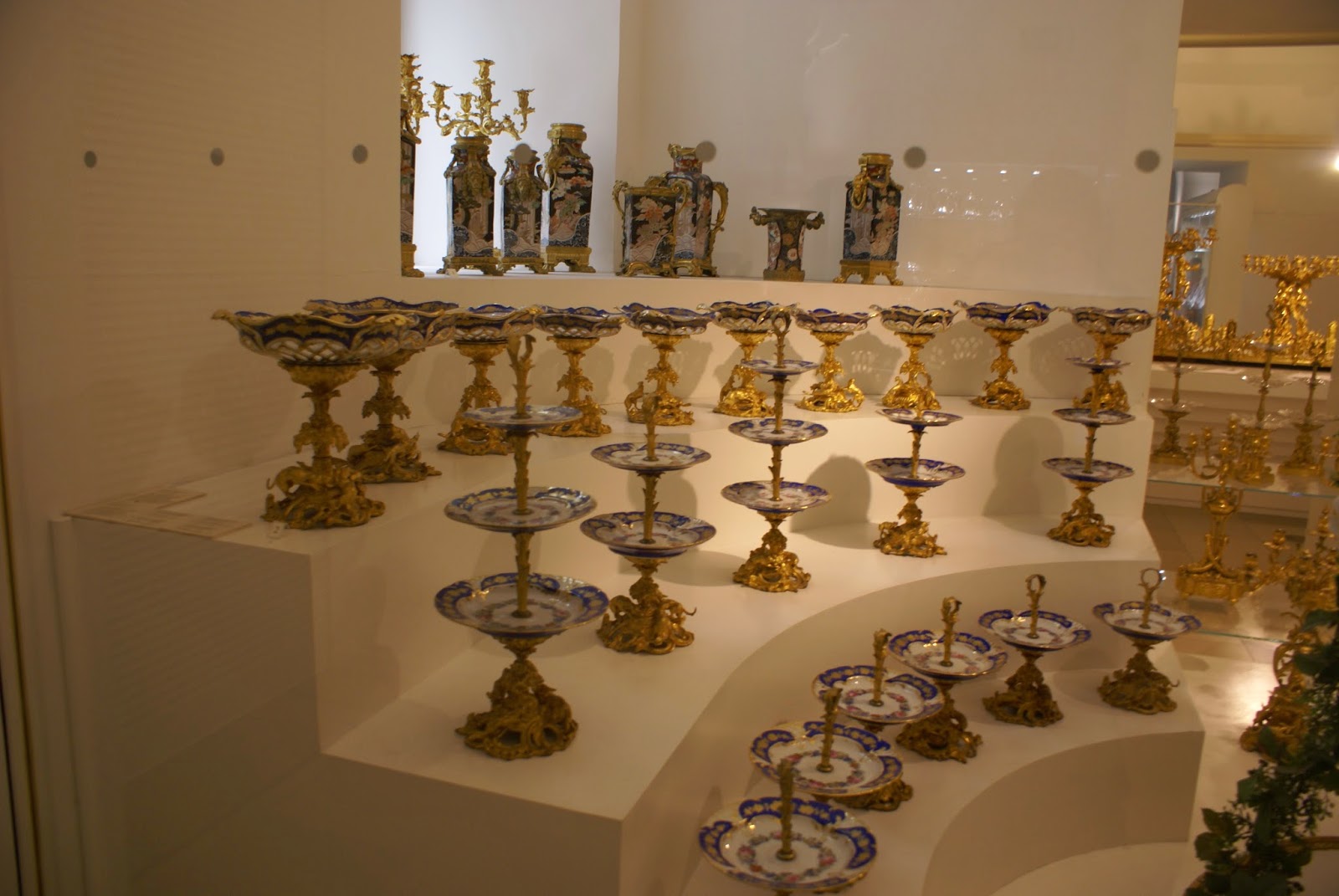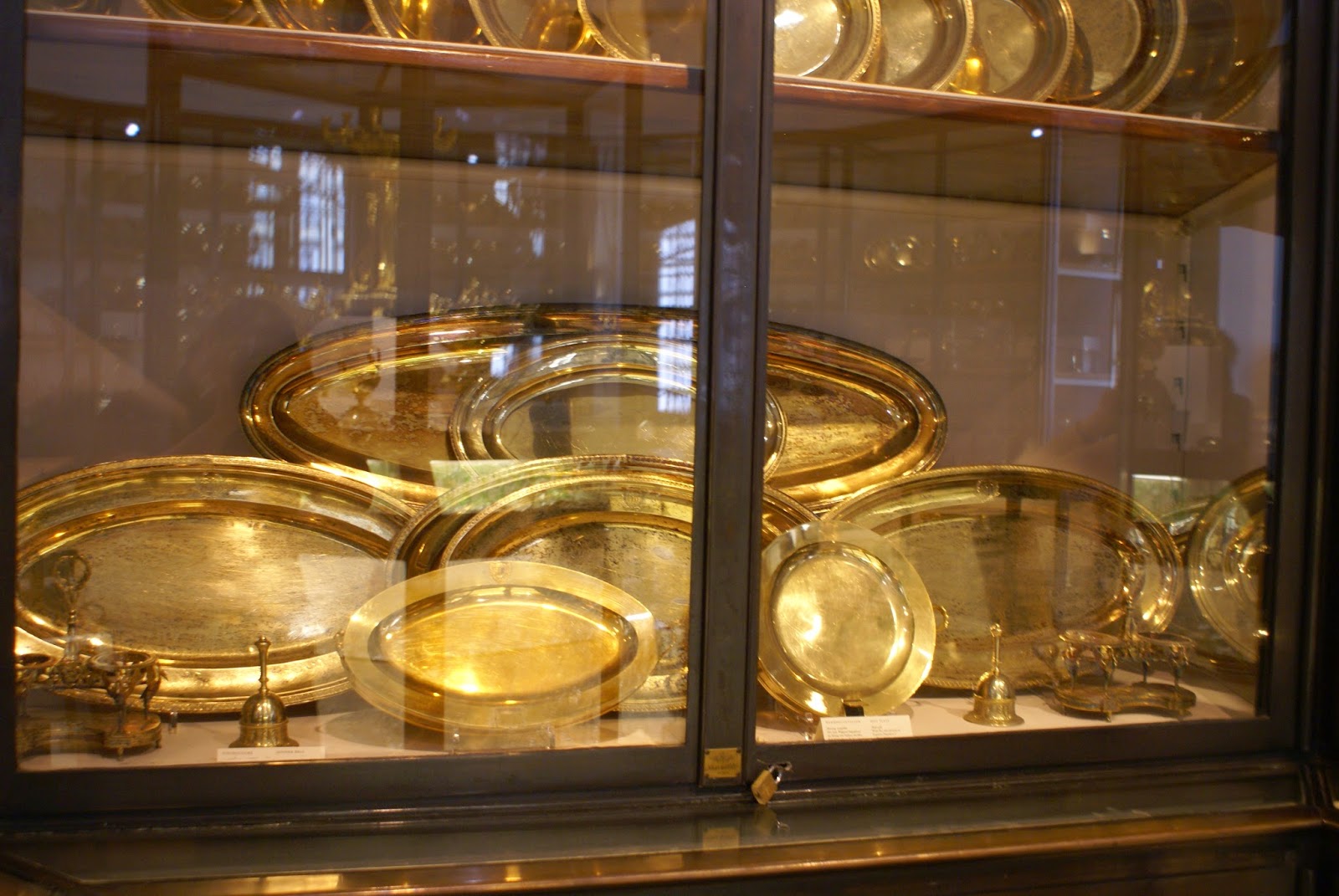After the others had finished eating, I walked with them a bit into the Innenstadt before going my own way. I passed an interesting mosaic on the way.
This is the Minoritenkirche. The name refers to an order of Franciscan monks. Construction started in the 13th century and was completed in 1350. The belltower looks a bit different because it was destroyed a few times in various conflicts.
Details of the fountains on Michaelerplatz.
Next stop, a series of exhibits in the Hofburg. The first floor is dedicated to the Silberkammer, the collection of table settings used by the Habsburg court.
The collection was massive.
These seem to be labels for wine containers.
After a large selection of silver, there was a room dedicated to porcelain.
There's not a lot I can specifically say about a lot of these pieces but I know Mom and Grandma like pretty plates, so here's a lot of pretty plates!
Crystal salt cellars.
Candelabras on the right, serving trays for little desserts and things on the left, big centerpiece in the middle.
Little statues of mythological figures used to decorate the table.
I have become convinced that we can blame tacky collectible plates on European royalty.
Massive golden table setting. Note that the trays that would hold dishes have mirrored surfaces.
Various lead crystal glasses.
This is a table setting used by the Empress Elizabeth ('Sisi').
The audio guide explained that for a long time, most meals were served on silver dishes. The introduction of porcelain plates started with dessert plates, while the main meals were still eaten on silver.
The individual pieces are monogrammed.
Napkin folding was taken to a whole new level. The linen napkins were one meter wide.
This was a dish for cooling wine glasses.
Silk flower centerpiece.
This is a gold-plated porcelain table service. The audio guide explained that a lot of the original gold plates and whatnot were melted down in order to fund various wars, particularly against Napoleon. Afterwards, they needed to create a new, less-costly table service that looked just as impressive.
There was a large collection of flower plates, each with a label explaining what species of flower it featured.
...yeah. So this is a duck squeezer.
No idea what all of these things are for.
Candelabras and statue of Sisi.
A series of plates featuring scenes from mythology.
Silverware for Sisi's yacht.
Bust of Sisi.
When royalty went on vacation, they brought their own silverware.
This is a set of vermeil silverware.
A mustard container.
Oil and vinegar containers.
A teapot.
Sanitary porcelain.
This is a very pretty chamber pot and wash basin.
These are also chamber pots. Remember when antique shopping: If it has one handle and no spout, IT IS NOT A GRAVY BOAT.
A collection of desk porcelain: ink wells, candle sticks, and sanders.
Everyone who worked at the Hofburg could eat in the cantina, which had its own set of less elaborate porcelain.
Everything used in the cantina was stamped with the double-headed eagle.
Various kitchen tools.
And we end on yet more chamber pots.
After the Silberkammer I went upstairs to the Sisi museum.









































































































































No comments:
Post a Comment